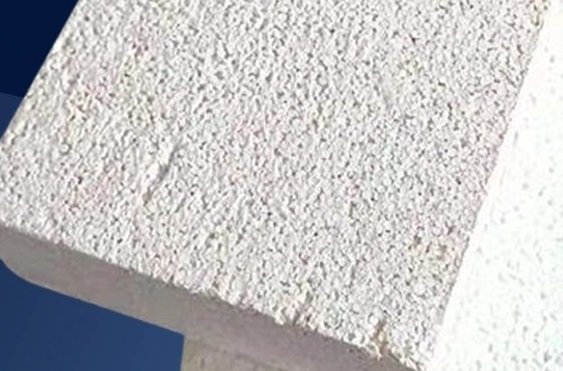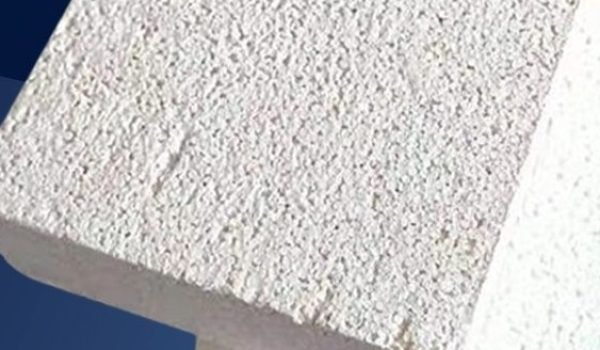Thermoset materials are getting more attention in manufacturing because of their special properties. People wonder if they can be injection molded, a method often used for thermoplastics. Injection molding melts and shapes plastic into specific forms, but thermosets are different.
Thermosets are very rigid and can handle high temperatures, making them great for some uses. But, injection molding needs the right material properties to work well. Researchers and makers are looking into using thermosets in injection molding. They see benefits like better product quality and lower costs.
Combining thermoset materials with injection molding could lead to new manufacturing ideas. Knowing about thermosets and injection molding opens doors for better product design. This could change how products are made, allowing for more complex and better-performing items.
Understanding Thermosets: Basics and Characteristics
Thermosets are a key type of polymer used in many fields, like manufacturing and construction. When picking materials for a project, knowing thermosets is vital. They can handle high temperatures well and keep their shape, making them perfect for projects needing thermal stability.

Thermosets stand out when compared to thermoplastics. They are more rigid and less likely to bend, which is great for projects needing strong structures. Here are some main traits of thermosets:
- High thermal stability
- Resistance to deformation
- Rigidity and strength
- Chemical resistance
When choosing materials for a project, it’s important to look at thermoset properties and compare them to thermoplastics. Knowing what thermosets offer helps manufacturers pick the right materials for their products.
The choice between thermosets and thermoplastics depends on the project’s needs. By understanding each material’s unique benefits, manufacturers can create products that meet quality and performance standards.
| Material | Thermal Stability | Deformation Resistance |
|---|---|---|
| Thermosets | High | High |
| Thermoplastics | Low | Low |
The Injection Molding Process Explained
The injection molding process is complex. It involves preparing a mold, injecting material, and ejecting the product. This method is fast and cheap to make, thanks to automation. The choice of material is also key, affecting the product’s quality and durability.
First, the mold is prepared. It must handle the high pressures and temperatures of the process. Then, the right material is picked. This can be thermoplastics or thermosets, which are strong and resist heat and chemicals well.
Steps in Injection Molding
- Mold preparation: designing and creating a mold that can withstand high pressures and temperatures
- Material selection: choosing the appropriate molding materials, such as thermoplastics or thermosets
- Injection: injecting the material into the mold
- Ejection: ejecting the final product from the mold
Injection molding has many benefits. It’s fast, cheap, and can make complex shapes. By knowing the steps and choosing the right materials, makers can make high-quality products efficiently.
Advantages of Injection Molding
Some key benefits of injection molding are:
| Advantage | Description |
|---|---|
| High production rates | Injection molding allows for the rapid production of large quantities of products |
| Low labor costs | The automated nature of injection molding reduces the need for manual labor |
| Complex shapes and designs | Injection molding can produce complex shapes and designs that would be difficult or impossible to produce with other manufacturing methods |
Why Use Thermosets in Injection Molding?
Thermosets are a top choice for injection molding because of their special properties. They are very durable, can handle high temperatures and chemicals, and keep their shape well. This makes them perfect for tough industries.
Thermosets are great because they can handle extreme heat and harsh conditions. This is why they’re often used in the car, plane, and electrical parts industries. They help make new, complex parts possible.
Thermosets are used in many ways and their uses are growing. Here are some main areas where they’re used:
- Aerospace: They make parts for planes and space, like engine parts and satellite parts.
- Automotive: They’re used in car parts, like engine parts, transmission parts, and electrical systems.
- Electrical: They’re used in making electrical parts, like connectors, switches, and circuit breakers.
In summary, thermosets bring many benefits to injection molding, like high performance and durability. As new manufacturing needs come up, thermosets will likely be used even more. This will lead to more innovation in making products.
Limitations of Injection Molding with Thermosets
Working with thermosets in injection molding comes with challenges. Achieving the right cure is hard, leading to processing issues and quality problems. Material waste and higher costs compared to thermoplastics are also concerns.
Some key issues with thermoset injection molding include:
- High pressure and temperature needs, which raise energy costs and lower cost efficiency
- Limited moldability, making complex shapes and designs hard to produce
- Potential for material degradation, affecting product performance and lifespan
Despite these challenges, many manufacturers are finding ways to overcome them. They invest in research and development to improve processing and reduce costs. This leads to greater cost efficiency. As demand for high-performance materials grows, thermosets in injection molding will likely become more common, driving innovation.
Understanding the limitations of thermoset injection molding helps manufacturers make better choices. While thermosets have challenges, their unique benefits make them appealing for many uses. Ongoing research aims to improve their cost efficiency and performance.
Key Thermosetting Materials for Injection Molding
Thermosetting materials are key in injection molding because of their special properties. They have great mechanical strength, can handle high temperatures, and resist chemicals well. The right material depends on what the product needs.
Resins like epoxy, polyurethane, and phenolic are often used. Each resin has its own strengths. For example, epoxy is strong and resists chemicals well. Polyurethane is flexible and can handle scratches.
The qualities of thermosets, like their strength and heat resistance, are very important. They decide if a material is good for a certain use. Here’s a table showing some key features of common thermosets:
| Material | Mechanical Properties | Thermal Resistance | Chemical Stability |
|---|---|---|---|
| Epoxy Resin | High strength, low shrinkage | Good thermal stability | Excellent chemical resistance |
| Polyurethane Resin | High flexibility, abrasion resistance | Good thermal stability | Good chemical resistance |
| Phenolic Resin | High strength, low shrinkage | Excellent thermal stability | Good chemical resistance |
In summary, picking the right thermosetting material for injection molding is all about the product’s needs. Knowing the strengths of different resins helps manufacturers choose the best one for their products.
Innovations in Thermoset Processing Techniques
Thermoset processing has seen big changes in recent years. These changes aim to make moldability and performance better. New thermoset materials with better properties are now possible thanks to these innovations.
These improvements have made it easier to create complex shapes. This means thermosets can be used in more places, like cars and planes.
Advancements in Curing Methods
New curing methods have greatly helped thermosets. They make curing faster, improve thermal stability, and ensure better shape accuracy.
Hybrid Approaches
Hybrid materials that mix thermosets with thermoplastics are also being looked into. They offer better toughness, thermal resistance, and electrical properties. These materials are used in cars, planes, and energy storage.
Hybrid materials bring many benefits. They have better mechanical properties, thermal stability, and shape accuracy. They also weigh less and cost less.
These advancements in thermoset processing are set to grow their use in many industries. They will help create new products that are better, more efficient, and sustainable.
Case Studies: Successful Thermoset Injection Molding
Thermoset injection molding has been a hit in many industries. It offers case studies that show its worth. These industry examples help manufacturers see the good and bad sides of using thermosets.
In the car world, thermosets make parts lighter and stronger. Lessons from this field can help other areas like space and everyday items. For example, thermosets can cut costs and make products better.
Important lessons from these case studies include picking the right thermoset, designing smart molds, and tweaking the process. Following these tips can help manufacturers succeed. Here are some industry examples of where thermoset injection molding works well:
- Aerospace: making parts for planes and spaceships that are both light and strong
- Automotive: making engine parts and dashboard trim
- Consumer goods: creating things like electrical connectors and parts for appliances
By looking at these case studies and industry examples, manufacturers can learn a lot. They can understand the ups and downs of thermoset injection molding. This knowledge helps them find ways to succeed.
Comparing Thermoset Injection Molding with Other Techniques
Thermoset injection molding is just one way to make molded products. To pick the right method for a project, comparing different molding techniques is key. We look at the good and bad of each, like cost, how fast it is, and how good the product is.
Other methods include compression molding and transfer molding. Each has its own benefits and drawbacks. For example, compression molding works well for big, complex parts. Transfer molding is better for small, detailed pieces. Looking closely at these methods helps manufacturers choose the best one for their needs.
When looking at the pros and cons, manufacturers should think about material limits, what equipment is needed, and labor costs. By considering these, they can make a smart choice. Also, comparing thermoset injection molding to other methods helps improve production and product quality.
Overview of Alternative Molding Methods
- Compression molding: suitable for large, complex parts
- Transfer molding: ideal for small, intricately detailed components
- Other methods: such as blow molding, rotational molding, and extrusion molding
By doing a detailed comparison and looking at the good and bad of each method, manufacturers can pick the best molding technique. This choice helps improve production efficiency and product quality.
Future Trends in Thermoset Injection Molding
The industry is changing fast, and thermoset injection molding is no exception. New materials with better thermal and chemical resistance are on the horizon. Also, making things faster and more efficient is a big goal, with new ways to mix thermosets and thermoplastics.
Emerging Technologies and Innovations
New tech like advanced mold designs and smart control systems will make thermosets easier to work with. This will also cut down on waste. Plus, the push for green materials and energy-saving methods is growing stronger.
Predictions for Market Growth and Adaptation
The thermoset injection molding market is expected to grow a lot. This is because more people want materials that are both light and strong. In fields like cars, planes, and gadgets. Companies will have to keep up with these changes by investing in new ideas and products.




